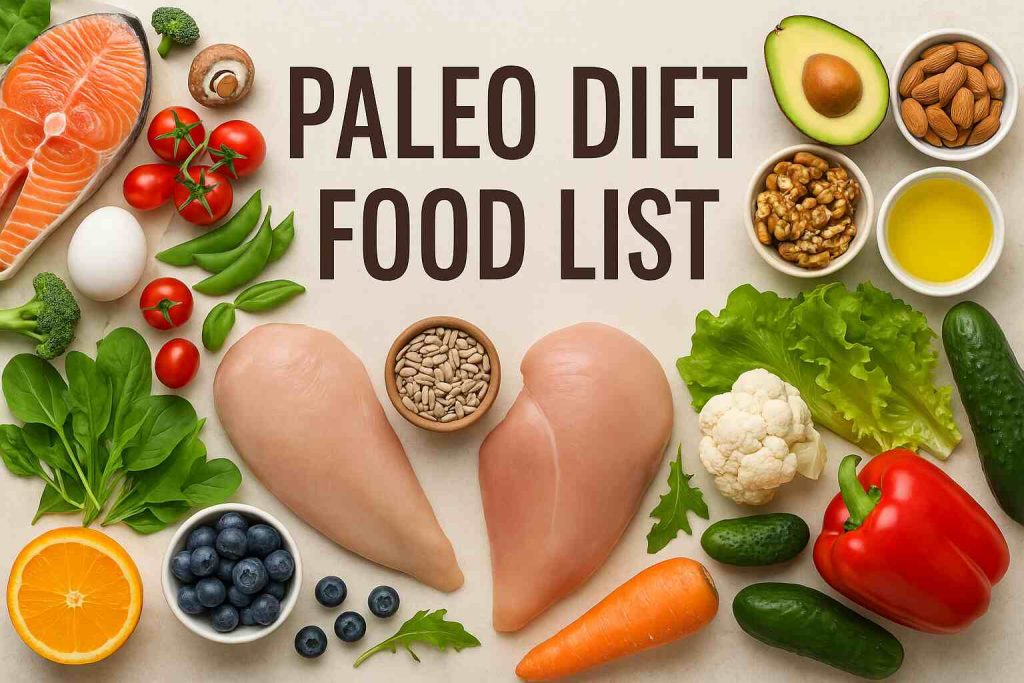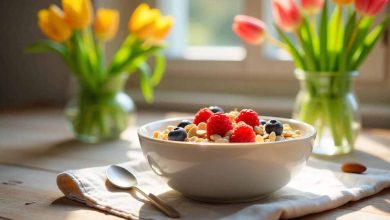The Ultimate Paleo Diet Food List: What to Eat and Avoid
Paleo Diet Food List
The Paleo diet, often called the “caveman diet,” is based on eating whole, natural foods that our ancestors consumed thousands of years ago. This diet focuses on fresh meats, fish, fruits, vegetables, nuts, and seeds while eliminating processed foods, grains, dairy, and refined sugars. If you’re considering adopting the Paleo lifestyle, having a detailed food list is essential. In this guide, we’ll break down the foods you can eat and those you should avoid to achieve the best results.
What is the Paleo Diet?
The Paleo diet mimics the dietary habits of early humans before the advent of agriculture. It is designed to help with weight loss, improve digestion, reduce inflammation, and support overall health. By focusing on unprocessed and nutrient-dense foods, the Paleo diet eliminates many modern health risks associated with processed and artificial ingredients.
Foods You Can Eat on the Paleo Diet
1. Meat and Poultry
Meat is a primary component of the Paleo diet, providing protein and essential nutrients. Choose grass-fed, pasture-raised, and organic options whenever possible.
- Beef (grass-fed preferred)
- Chicken (free-range)
- Turkey
- Pork
- Lamb
- Bison
- Duck
- Venison
- Organ meats (liver, heart, kidneys)
2. Fish and Seafood
Rich in omega-3 fatty acids and essential nutrients, wild-caught fish and seafood are highly recommended in the Paleo diet.
- Salmon
- Tuna
- Sardines
- Mackerel
- Shrimp
- Lobster
- Crab
- Clams
- Oysters
- Cod
3. Vegetables
Vegetables are a cornerstone of the Paleo diet, offering fiber, vitamins, and antioxidants. All non-starchy vegetables are allowed.
- Spinach
- Kale
- Broccoli
- Cauliflower
- Cabbage
- Asparagus
- Zucchini
- Carrots
- Bell peppers
- Mushrooms
- Brussels sprouts
- Cucumber
4. Fruits
While fruits contain natural sugars, they are rich in vitamins and fiber. Moderation is key, especially for those watching their sugar intake.
- Apples
- Bananas
- Berries (strawberries, blueberries, raspberries, blackberries)
- Oranges
- Grapes
- Pineapple
- Mango
- Peaches
- Watermelon
- Kiwi
5. Nuts and Seeds
Nuts and seeds are excellent sources of healthy fats, protein, and fiber, but they should be consumed in moderation due to their high-calorie content.
- Almonds
- Walnuts
- Cashews
- Pecans
- Pistachios
- Macadamia nuts
- Chia seeds
- Flaxseeds
- Sunflower seeds
- Pumpkin seeds
6. Healthy Fats and Oils
Healthy fats provide essential nutrients and support overall health. Opt for unprocessed, natural sources.
- Olive oil
- Coconut oil
- Avocado oil
- Ghee (clarified butter)
- Grass-fed butter (in some Paleo variations)
- Tallow
- Lard
7. Herbs and Spices
Herbs and spices add flavor and have various health benefits. Avoid blends with added sugar or artificial ingredients.
- Basil
- Cilantro
- Rosemary
- Thyme
- Oregano
- Turmeric
- Cinnamon
- Garlic
- Ginger
- Paprika
- Cumin
8. Paleo-Friendly Beverages
Hydration is important on the Paleo diet. Choose natural, unprocessed drinks.
- Water (best choice)
- Herbal tea
- Black coffee (without sugar or dairy)
- Coconut water (unsweetened)
- Bone broth
Foods to Avoid on the Paleo Diet
To follow the Paleo diet correctly, eliminate processed foods and agricultural-era additions.
1. Grains and Cereals
Grains are excluded because they contain anti-nutrients like gluten and phytic acid, which can impact digestion.
- Wheat (bread, pasta, cereals)
- Rice
- Corn
- Oats
- Barley
- Rye
- Quinoa
2. Dairy Products
Dairy is not considered Paleo due to lactose and casein, which can cause inflammation.
- Milk
- Cheese
- Yogurt
- Butter (except grass-fed ghee in some cases)
3. Legumes
Legumes contain anti-nutrients and are not allowed in strict Paleo diets.
- Beans (black beans, kidney beans, chickpeas)
- Lentils
- Peanuts
- Soybeans (tofu, soy milk)
4. Processed and Refined Sugars
Refined sugar leads to inflammation, weight gain, and metabolic issues.
- White sugar
- Brown sugar
- High fructose corn syrup
- Artificial sweeteners (aspartame, sucralose)
- Candy, sodas, and desserts
5. Processed Foods and Junk Food
Processed foods often contain additives, preservatives, and unhealthy oils.
- Chips
- Fast food
- Packaged snacks
- Frozen dinners
- Processed meats (sausages, deli meats with additives)
6. Unhealthy Oils and Trans Fats
Industrial oils contribute to inflammation and poor heart health.
- Canola oil
- Vegetable oil
- Soybean oil
- Margarine
- Hydrogenated oils
Sample Paleo Meal Plan
Breakfast: Scrambled eggs with spinach and avocado, black coffee.
Lunch: Grilled chicken salad with olive oil dressing and walnuts.
Dinner: Baked salmon with roasted Brussels sprouts and sweet potato.
Snack: Almonds and a handful of berries.
Conclusion
Following the Paleo diet means embracing whole, unprocessed foods while avoiding grains, dairy, legumes, and refined sugars. By focusing on high-quality meats, vegetables, fruits, and healthy fats, you can support better digestion, weight management, and overall health. Use this comprehensive Paleo food list to make informed choices and enjoy a nutritious, natural way of eating.




